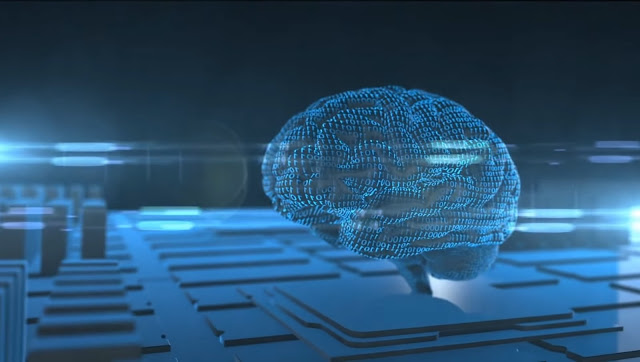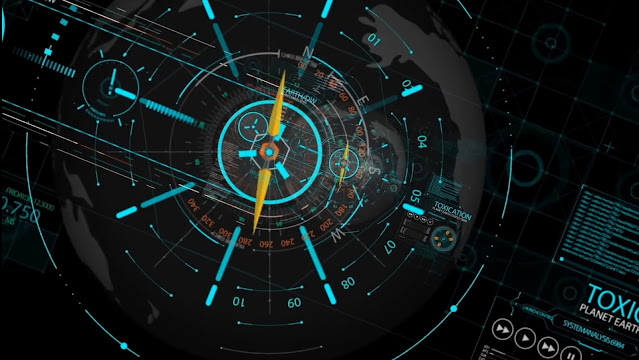 |
| Artificial Intelligence |
In today's era, it is very hard to talk about technology without artificial intelligence or AI, entering into the conversation. It has been influencing our lives directly or indirectly. Even though we may not be aware of it, AI is everywhere.
But what exactly is Artificial Intelligence (AI)? To be
simply put, Artificial Intelligence is
intelligence displayed by the machines, unlike the natural tendency of intelligence
shown by humans. Machines are programmed to think and behave like humans and
mimic their actions. AI can be referred to any machine that exhibits traits
associated with a human mind such as, learning and problem-solving. Leading AI textbooks call it the study of
"intelligent agents": any machine that understands its environment and takes
actions to maximize its chance of successfully achieving its objectives.
hr.new2 {
border-top: 1px dashed red;
}
The World of Artificial Intelligence -When Machines Think Like Humans
One can see various examples
of AI around us - from chess-playing computers to self-driven cars – all rely
heavily on deep human learning and language
processing. An interesting everyday
basic example of machine learning is when you check your mail; they get
automatically sorted into social, public, private and so on. The machine mind chooses the best possible
website according to your search and the choice of keywords use and gives you
the best websites as per your search.
With businesses using it to
operate more efficiently, AI is resulting in safer and more useful products;
allowing us to personalize our worlds as devices learn our choices and preferences.
Also Read | Can AI Technology Revolutionize Disease Diagnostics?
The origin and evolution of
Artificial Intelligence (AI) has been an exciting journey with its share
of ups and downs.
At the outset, thought-capable artificial beings were discussed first
time in an 1818 novel written by English author Mary Shelley (1797–1851) that tells the story of Victor Frankenstein, a young scientist who develops a sapient creature in an unorthodox
scientific experiment.
The study of "formal" reasoning started with philosophers and mathematicians in antiquity. The study of mathematical logic
is directly linked to Alan
Turing, a young British polymath who explored the mathematical possibility of
artificial intelligence. His theory of computation, which explained that a machine, by shuffling symbols as simple as
"0" and "1", could simulate any possible act of
mathematical deduction. This insight, that machines can simulate any process of
formal reasoning, is called as the Church–Turing
thesis.
This was the main thought behind logical framework of his 1950 paper Computing Machinery and Intelligence in which he discussed how to build intelligent machines and how to test
their intelligence. He basically
asked the golden question whether machines can think like humans, or
alternatively, can machines imitate a human in a test that now is famously
known as the imitation game? But what
stopped & hindered Turing from getting to work right then what the fact
that computers needed to fundamentally change. Before 1949 computers lacked
the basic prerequisite for intelligence: they could not store commands but only
execute them. In other words, they could be told what to do but couldn’t
remember what they did. Second, computing was extremely expensive.
Artificial Intelligence - When Fiction Meets Reality
Five years later, Dartmouth
College hosted the Dartmouth Summer
Research Project on Artificial Intelligence (DSRPAI)- a workshop considered
by many to be the first artificial intelligence program. Considered to be the
birthplace of the field of artificial intelligence itself, the event organizer John McCarthy, a scientist at
Dartmouth, coined the term AI around that time. In this historic event in 1956, McCarthy brought together
top researchers and scientist from various fields for an open ended discussion
on different ways that machines could potentially exhibit intelligence. Sadly,
the conference fell short of McCarthy’s expectations and he felt there was
failure to agree on standard methods for the field. Despite this, everyone agreed
on the sentiment that AI was achievable.
The importance of this conference
cannot be undermined as it catalyzed the next twenty years of AI study and
research.
In the following years since
then, AI witnessed a sudden wave of
optimism, followed by discontent and the loss of funding (known as an "AI
winter"),followed by new approaches, success and renewed
funding.
In the early 1980s,
AI research was renewed by the commercial success of expert
systems, a form of AI program that
simulated the knowledge and analytical skills of human experts. By 1985, the AI
market was achieving heights and reached over a billion dollars. During the
same time, Japan's fifth
generation computer project
inspired the U.S and British governments to revive funding for academic research. However, beginning with the downfall of the Lisp
Machine market in 1987, AI once
again fell into disrepute, and a second, longer-lasting hiatus began.
In the late 1990s and early 21st century, AI came into bigger
picture and began to be used for logistics, data mining, medical diagnosis and other areas. In 1997, Deep Blue became the first computer chess-playing system to beat a
reigning world chess champion and grand master Gary Kasparov. In the same year,
NaturallySpeaking became the first publicly available speech recognition
system developed by Dragon Systems and implemented on Windows.
The last few years demonstrated an absolute explosion in data
and computational ability. Some renowned examples
include Microsoft's development of a Skype system that can automatically
translate from one language to another and Facebook's system that can describe
images to blind people. Some of the most mind boggling developments of AI like Apple
introducing Siri, machines seeing cats in images, and also AlphaGo, an AI
powered system that went on to beat the world champion at the game Go
completely revolutionize our way of working.
In a survey conducted in 2017, one in five companies
reported that they had successfully "incorporated AI in some offerings or
processes".
Eyes set on the achieving heights in future, Artificial
intelligence is going to change every industry, but we still have to understand
its limits.
The principle
limitation of AI remains that it learns from the data which is fed to it. There
is no other way in which it can generate knowledge by itself. That means any
inaccuracies and glitches in the data will be reflected in the results. Stakes
remain high in expensive projects which are data-driven.
 |
| Artificially Intelligent Machines Augmenting Human Capacities |
Artificially Intelligent Machines
Augmenting Human Capacities
Others also believe that AI, unlike previous technological
revolutions, will create a risk of mass unemployment. We can already see artificial intelligence-based systems and chatbots taking every industry by storm. The rising concern of
AI taking over everyone’s jobs is becoming urgent as recent AI breakthroughs and
funding in research attract public attention.
But, one cannot deny the fact
that AI has evolved to provide many specific benefits in every industry. In the
21st century, AI experienced a revival with advancements in computer power, theoretical understanding and AI techniques becoming a crucial
and essential part of the technology driven industry, helping humans to solve many tough problems in computer
science. Hence, artificial intelligence
is not here to replace us. It augments our abilities and makes us perform better
at what we do. Companies have also been making huge investments in AI to explore
new arenas of market and grow their businesses.
Many of the AI applications which we use in our everyday lives, including virtual personal assistants such as Siri and Alexa and predictive traffic navigation apps, belong to this subset of AI.
Read Also | What is the future of technology in the Post-Covid world?
In the immediate
future, AI is looking like the next big
thing. It has the capability to completely transform our world and provide
a cleaner, smarter and more advanced way of life with exciting new business
opportunities too. Billions in cash, coupled with rapid technological
breakthroughs and adequate funding in research gives us a future where AI seems
plausible. Artificial intelligence will continue to enhance users' lifestyle
choices by using search algorithms that provide targeted information.
It is hence safe
to say that Artificial Intelligence driven technology has many benefits, endless
applications and is here to stay for good. There
is no doubt that this combination of humans and machines is going to be
unstoppable.
Comments